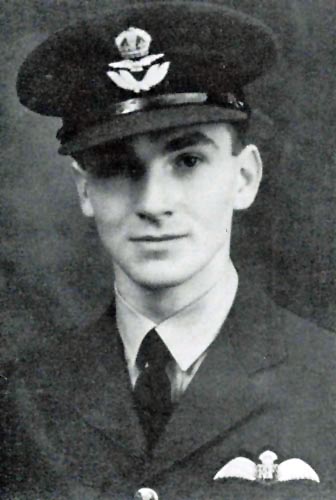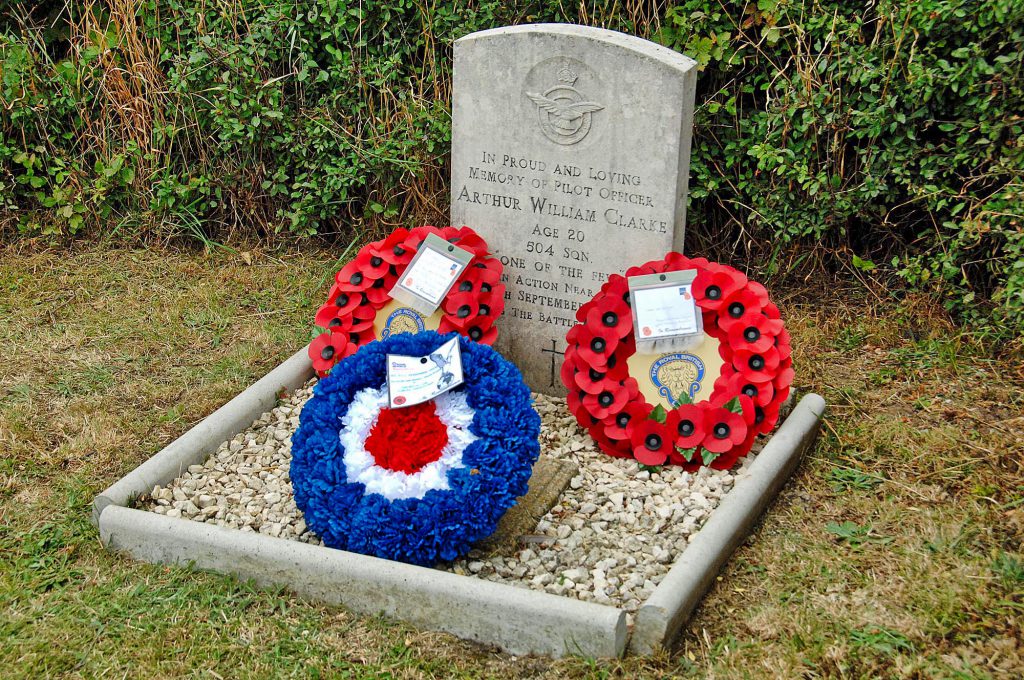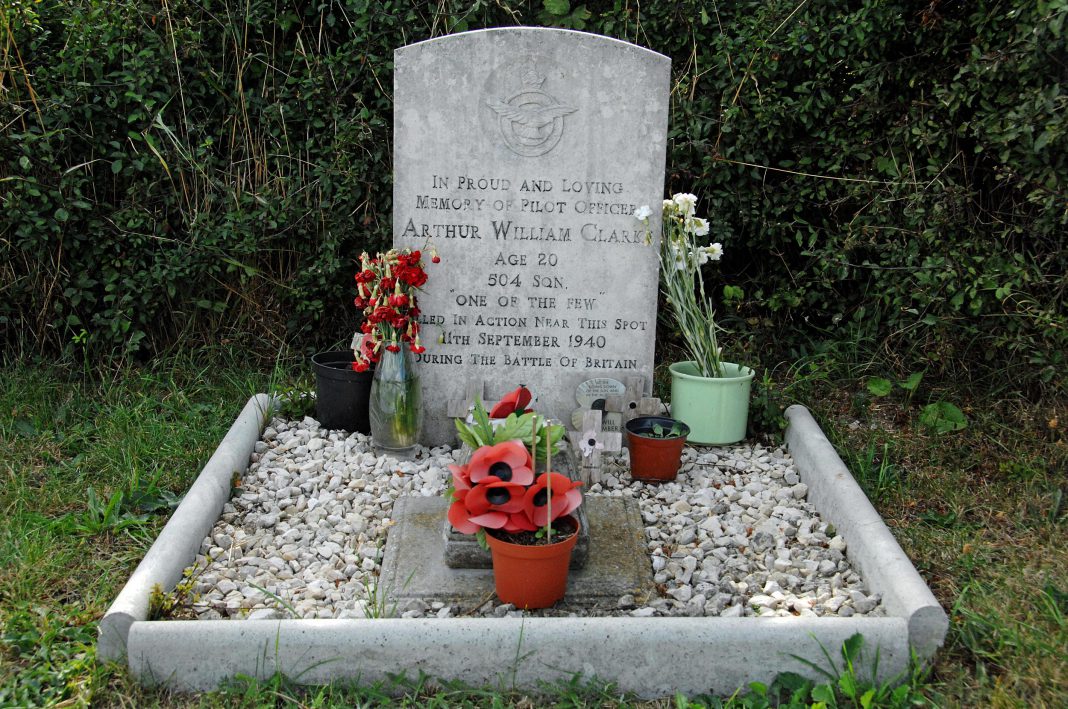With its engraved headstone, perimeter stone and floral tributes, this lonely plot on Romney Marsh, alongside the twisting road from Newchurch to New Romney, looks just like a grave. But it isn’t. No body is buried here. This is a memorial. A memorial to a young man who, like many others during the summer of 1940, lost his life over the fields of Kent and Sussex, struggling for supremacy of the sky during the Battle of Britain.

The body of 20-year-old Pilot Officer Arthur William Clarke lies in one of the fields close by, buried inside the tangled remains of his Hawker Hurricane beneath the soil and the grazing sheep. Born in Altrincham, Cheshire, Arthur Clarke joined the RAF on a short-service commission in 1939. After training he converted to Hurricanes and joined 504 Squadron based at Hendon, Middlesex. He was shot down on the afternoon of September 11, 1940.
Pilot Officer Clarke was listed as missing until 1971. It was then that the Battle of Britain Museum, Hawkinge, excavated the site and discovered enough evidence, including the silk inner gloves of a pilot and, poignantly, a pocket handkerchief marked with the name “Clarke’” to confirm the pilot had remained with his aircraft. Members of his surviving family conveyed their wish “to leave Bill’s remains where they lie”.

But Pilot Officer Arthur “Bill” Clarke is not forgotten. Despite the fact his memorial stone sits on the apex of a typically tight corner of a marsh country road, with nowhere close-by to park a vehicle, his marker always has fresh tokens of remembrance. Flowers, crosses, wreaths, tokens of respect, and care for the site are evident throughout the year. Yet hardly anyone is ever seen to be in attendance. So perhaps not quite such a lonely grave for Arthur Clarke. Merely alone.
As the anniversary of his loss passes this week, it is fitting to recall the poignant poem found among the flowers and wreaths shortly after the service and dedication to his memorial when it was erected in 1986:
“Think of me as you pass by, Reflect on why I had to die
So many young lives, Such senseless wars,
We surrendered our future, So you could have yours”
Image Credits: Chris Lawson .



